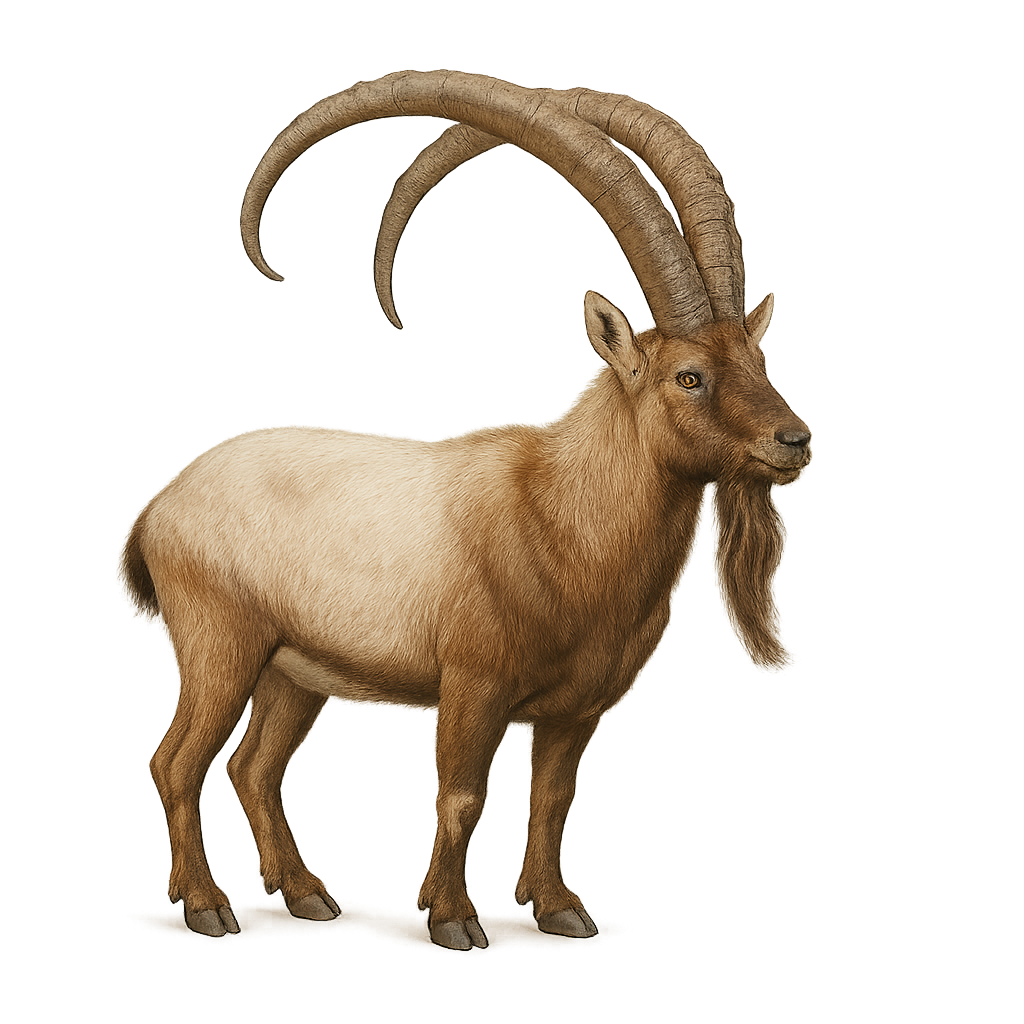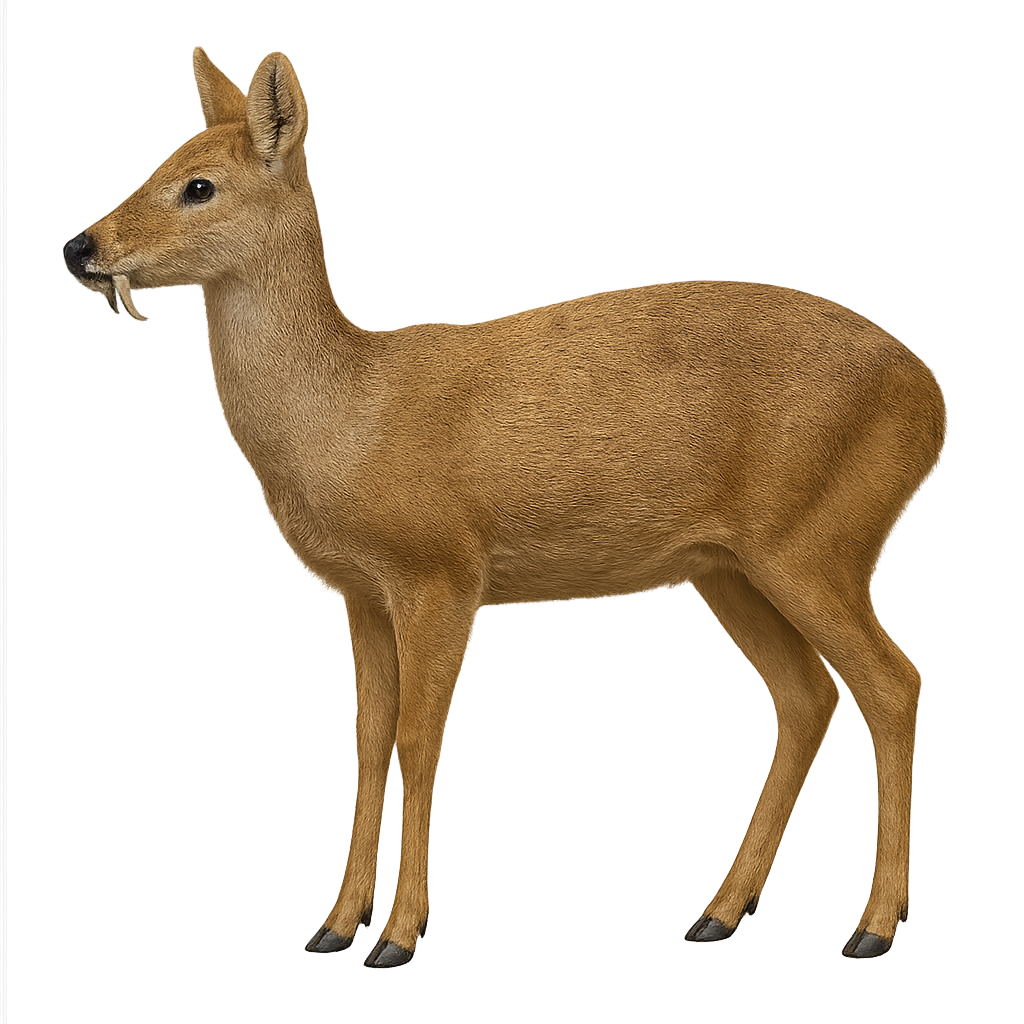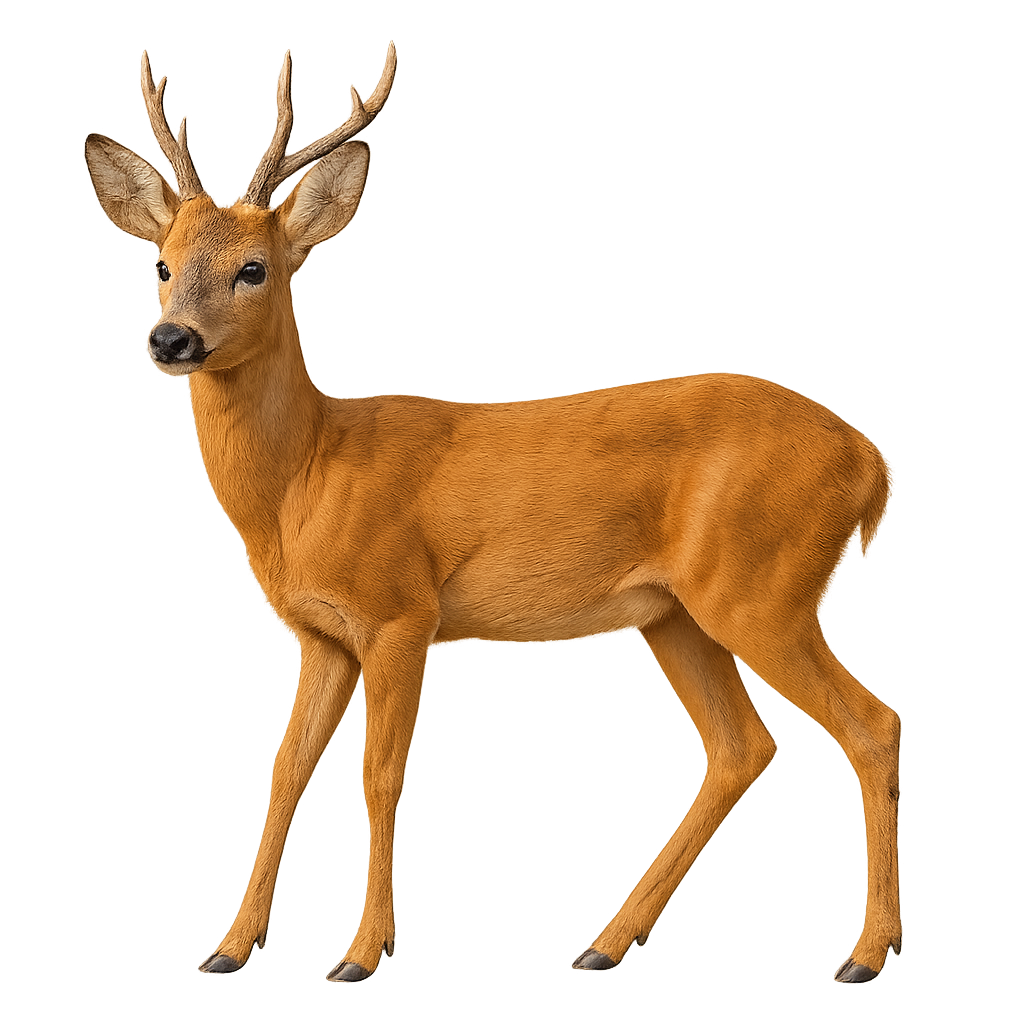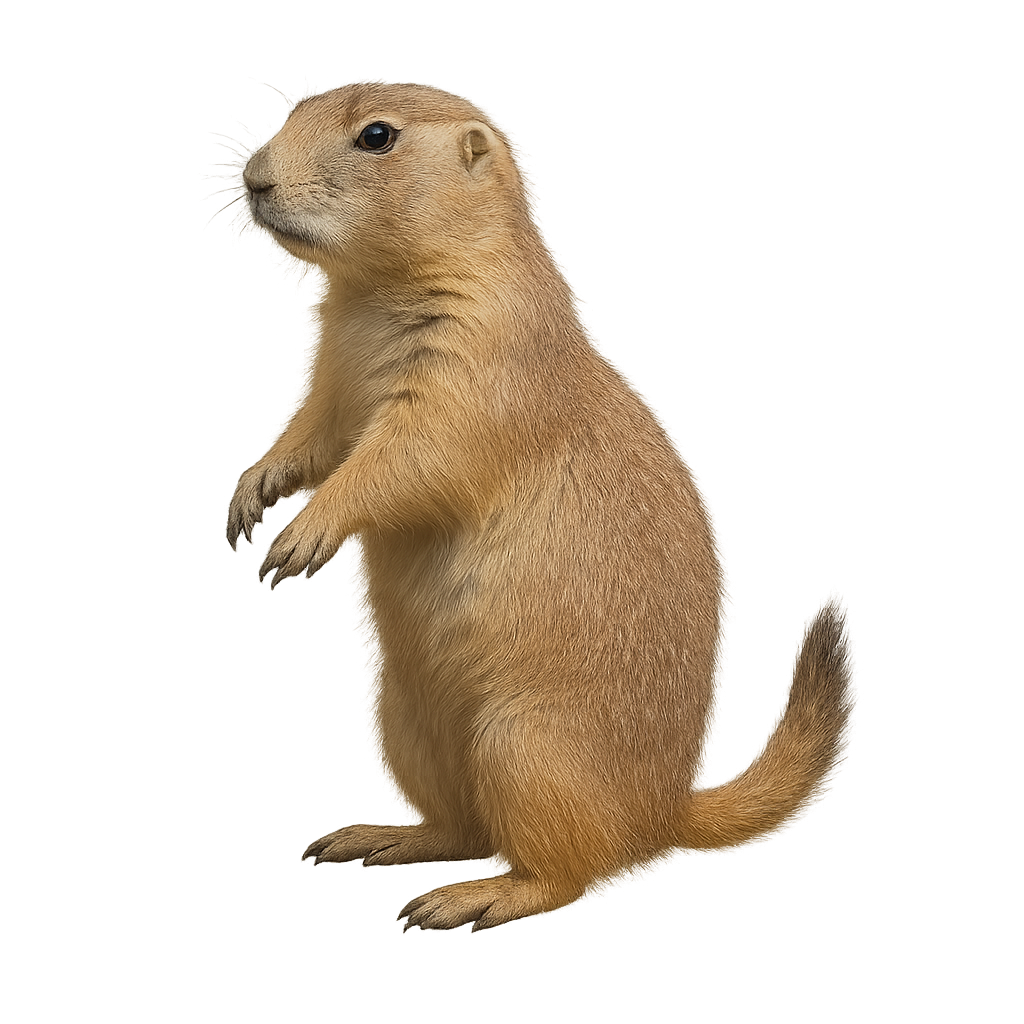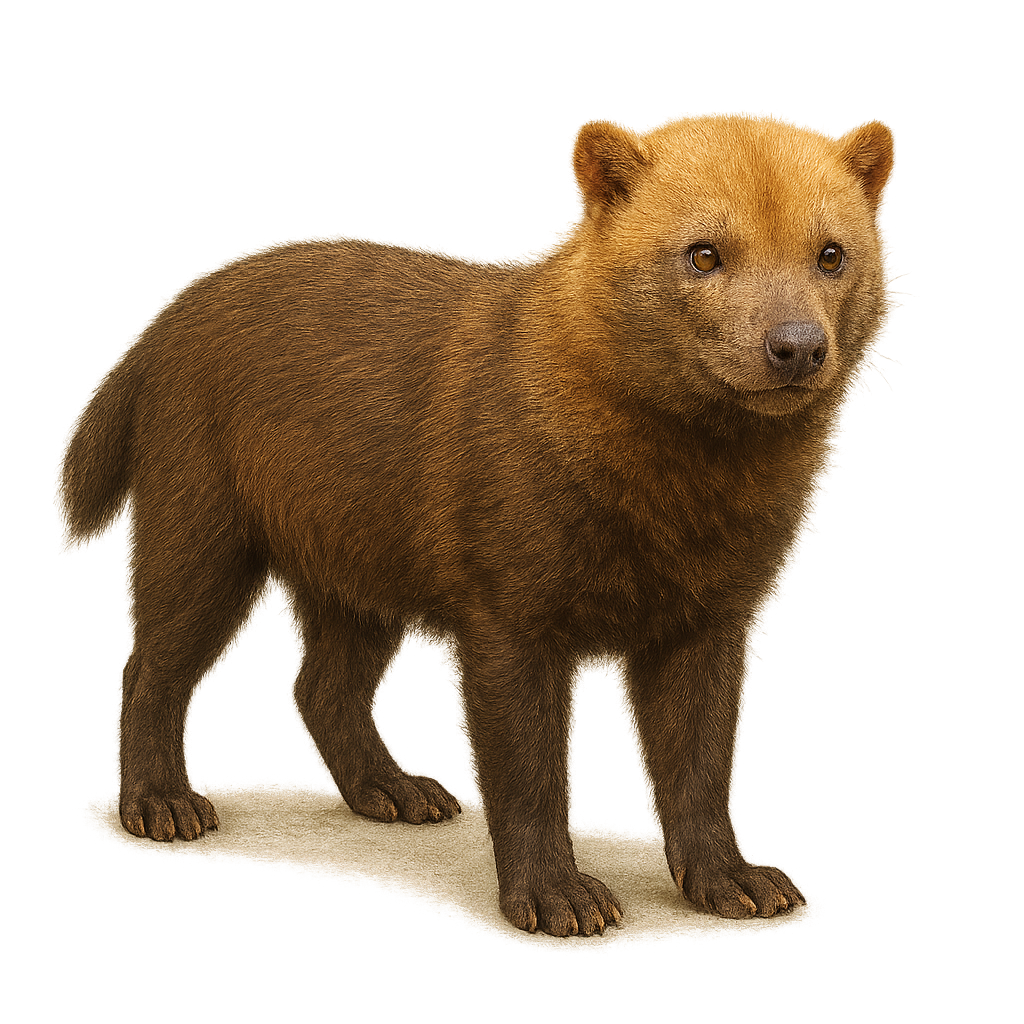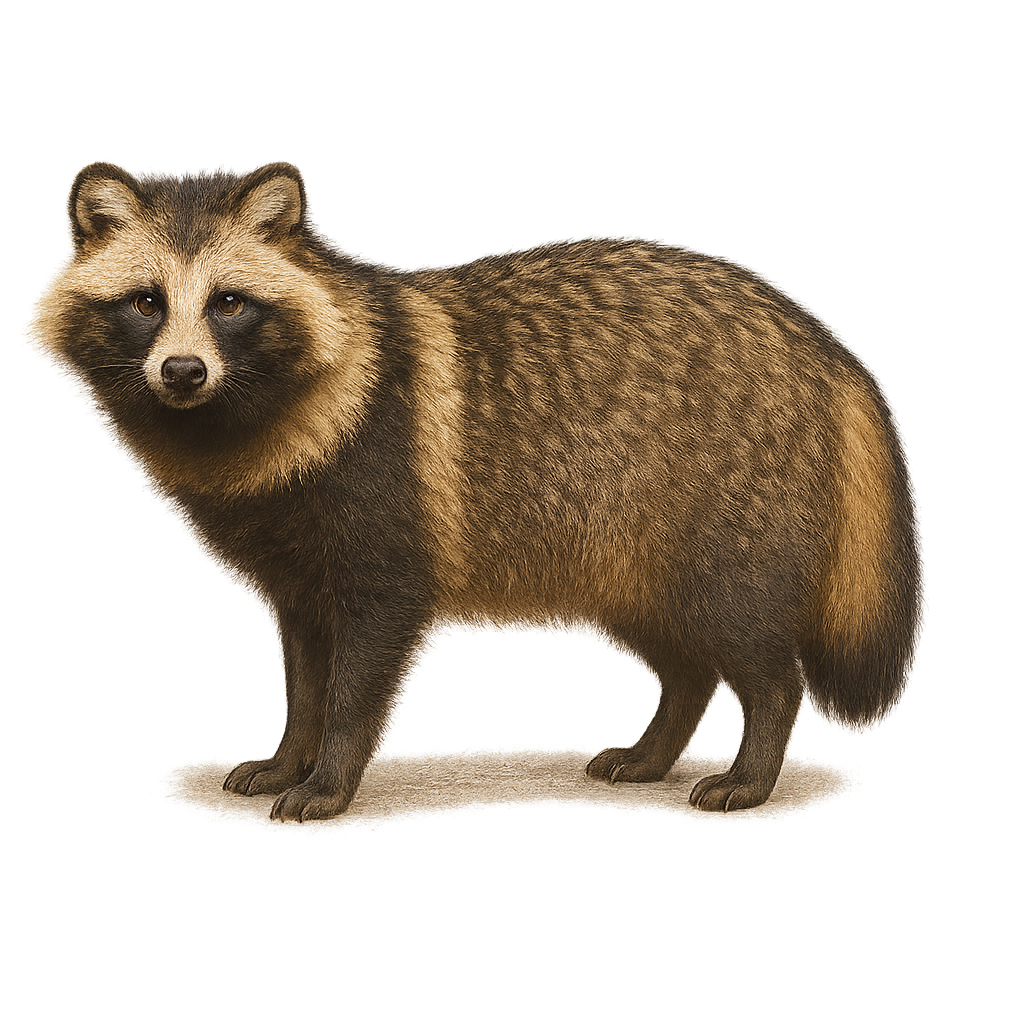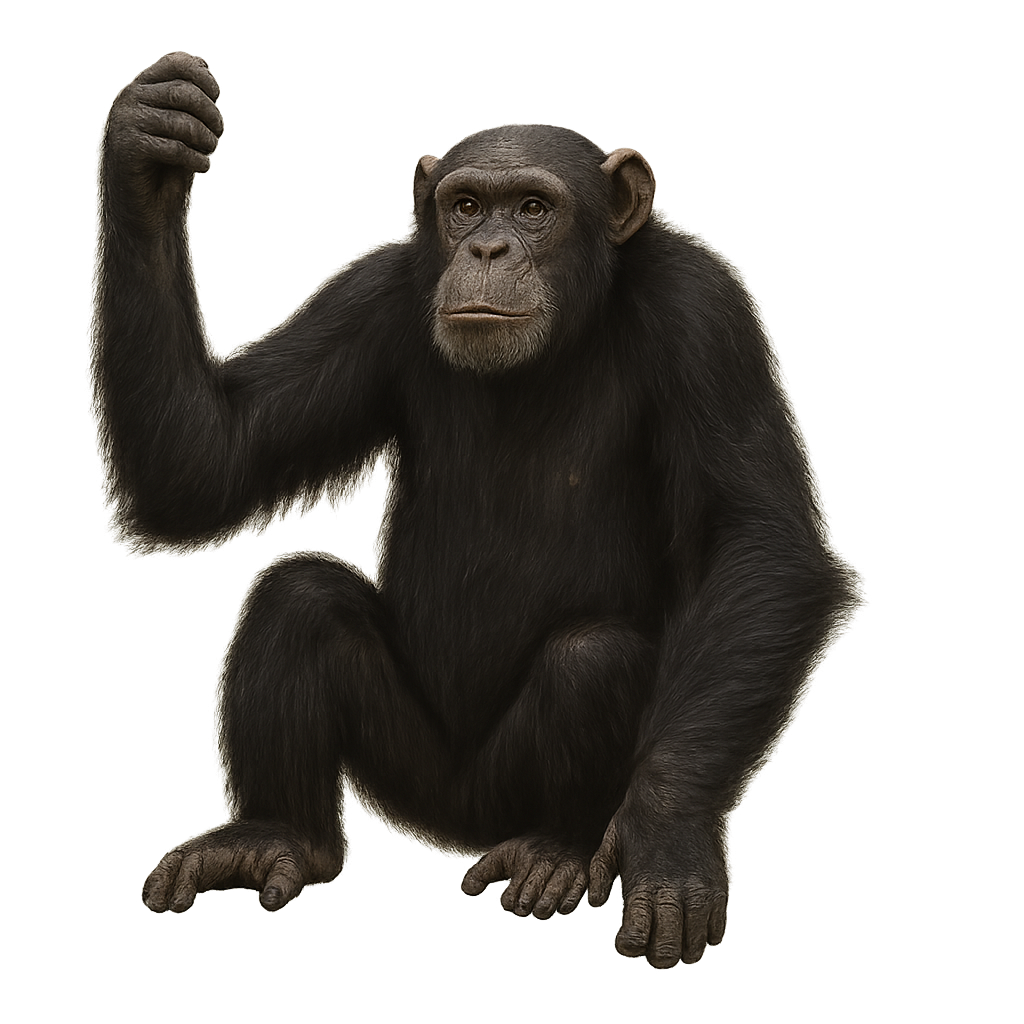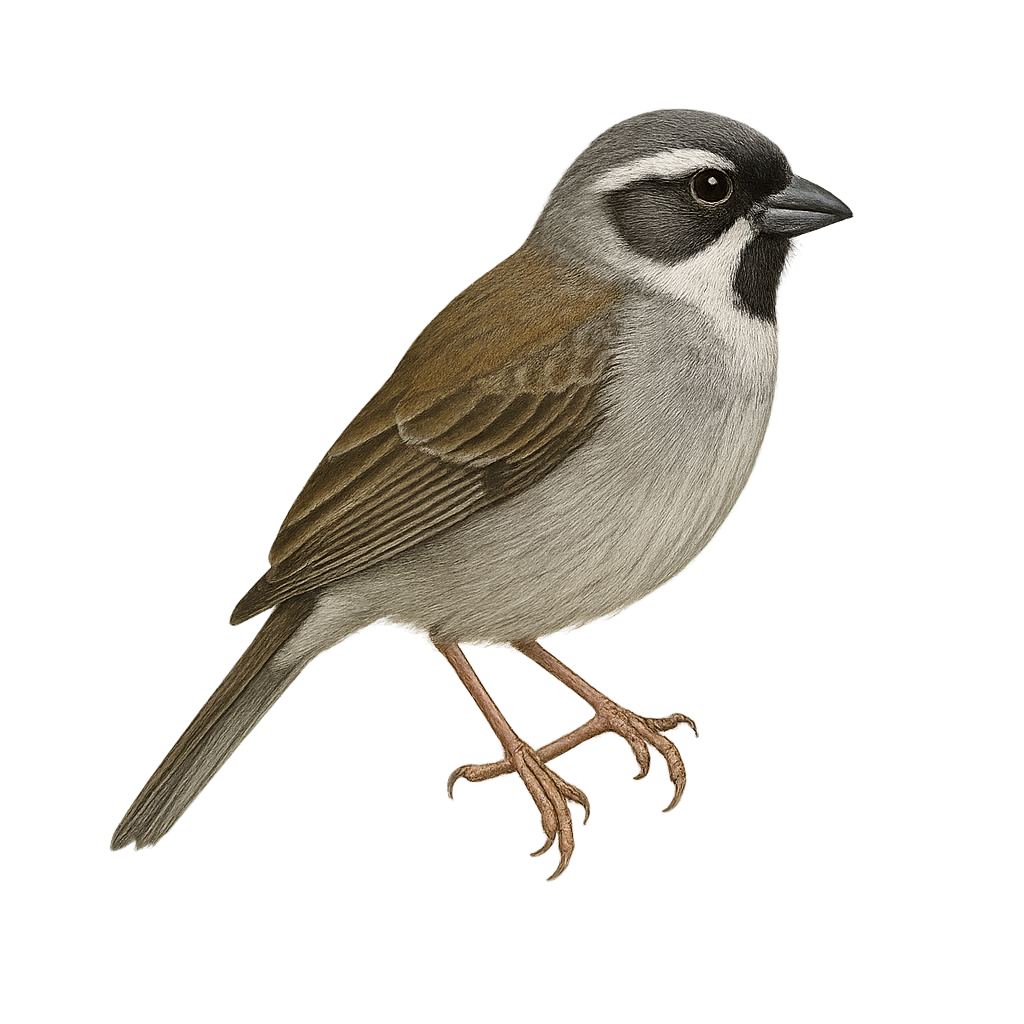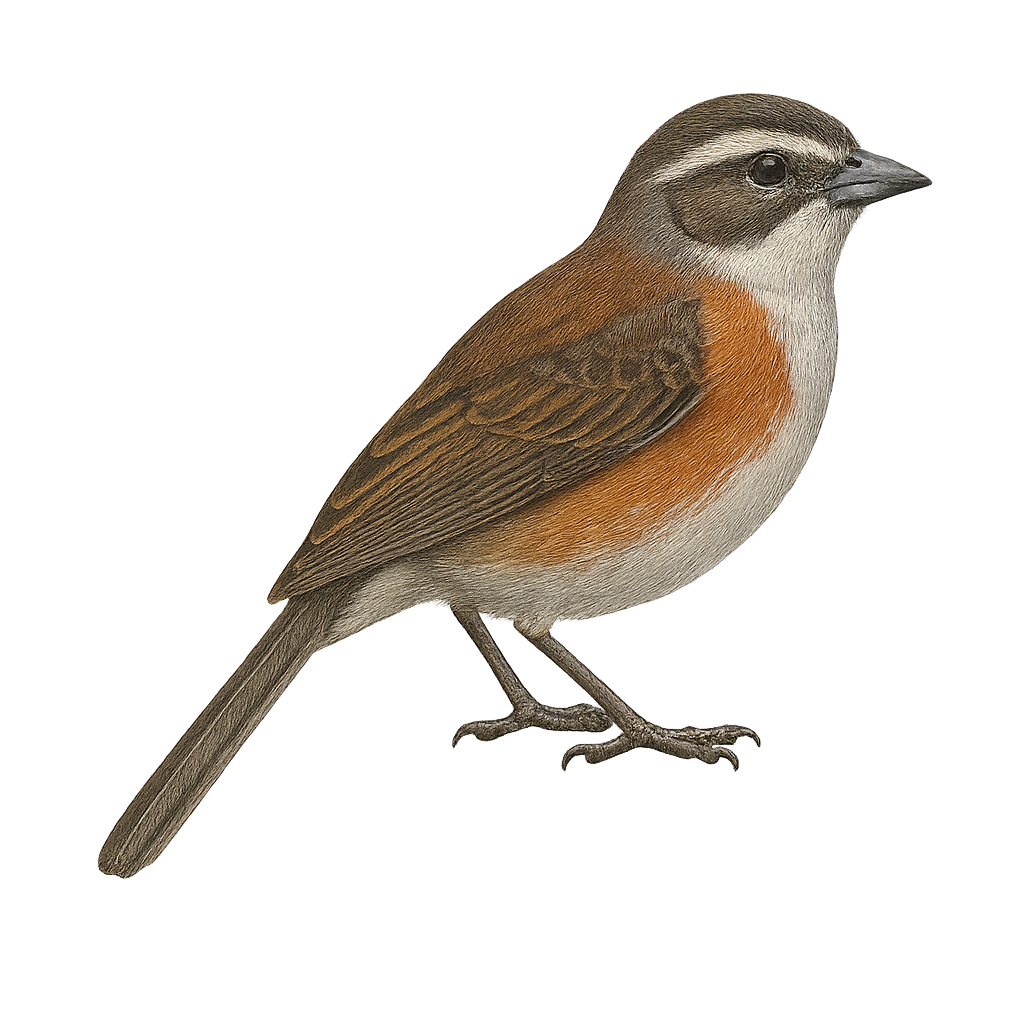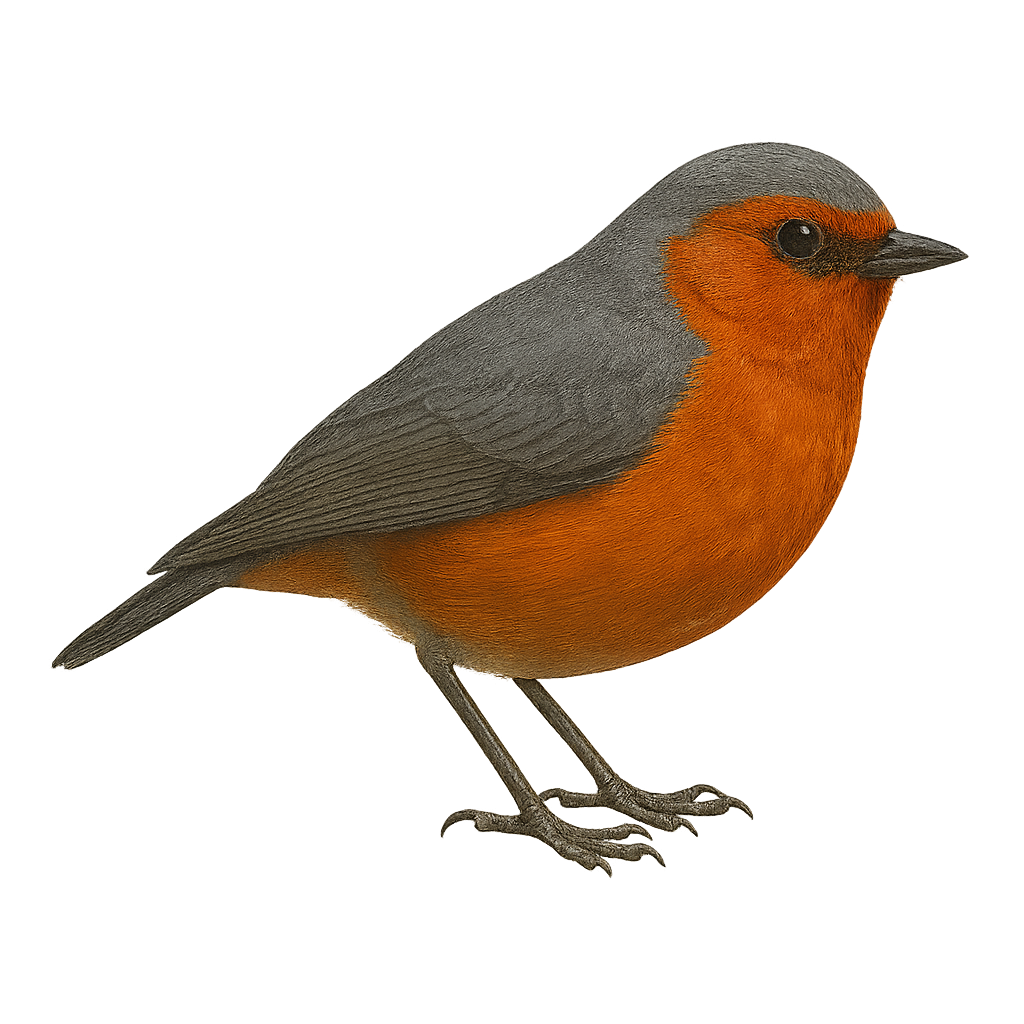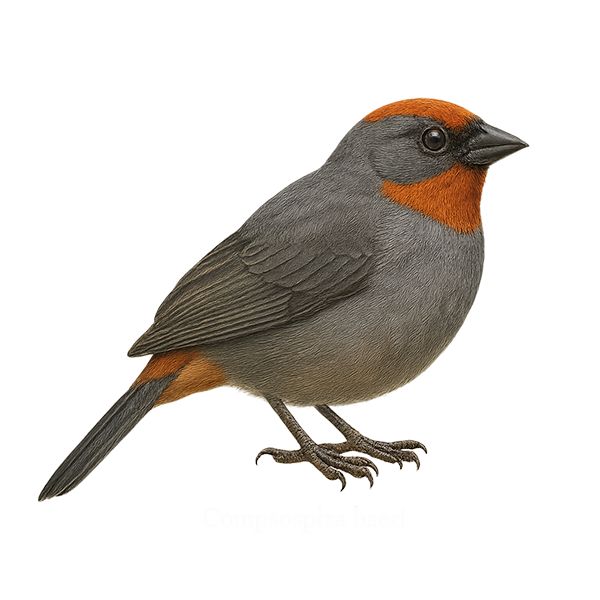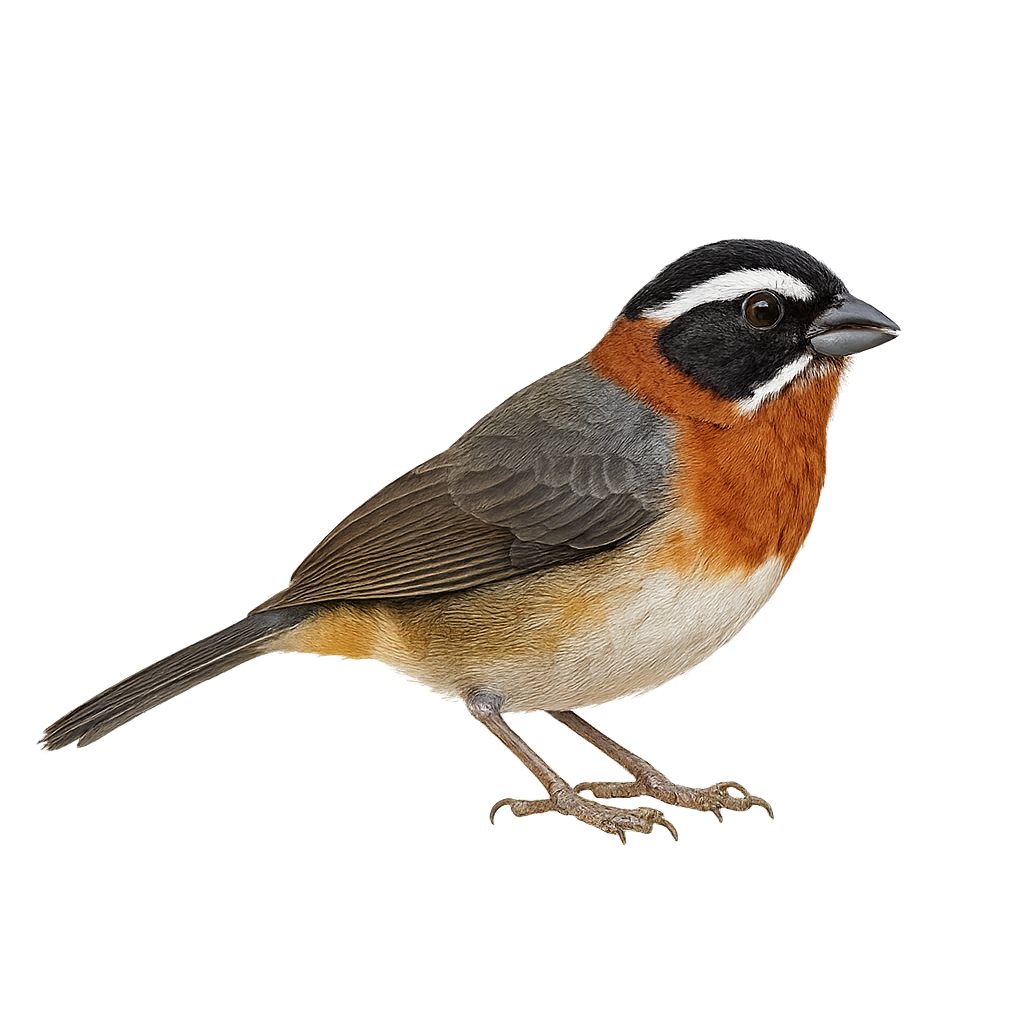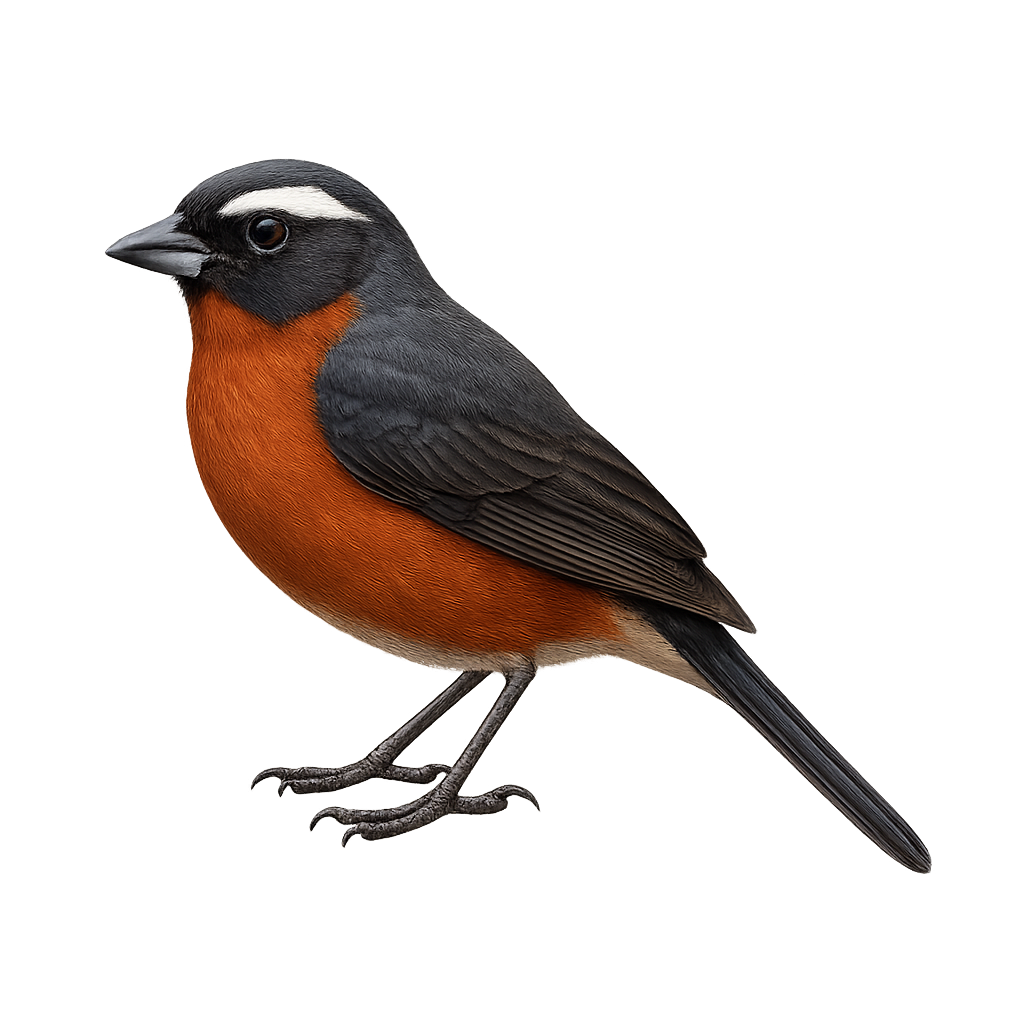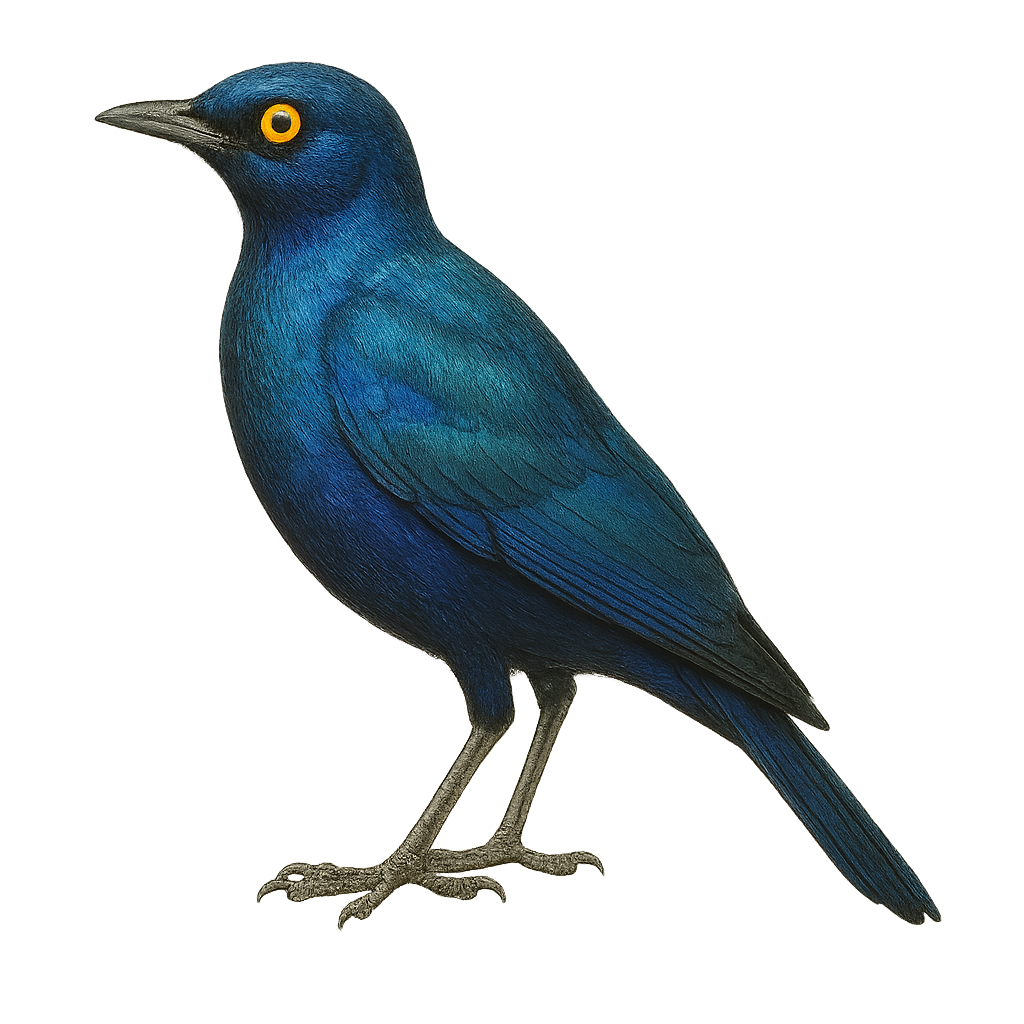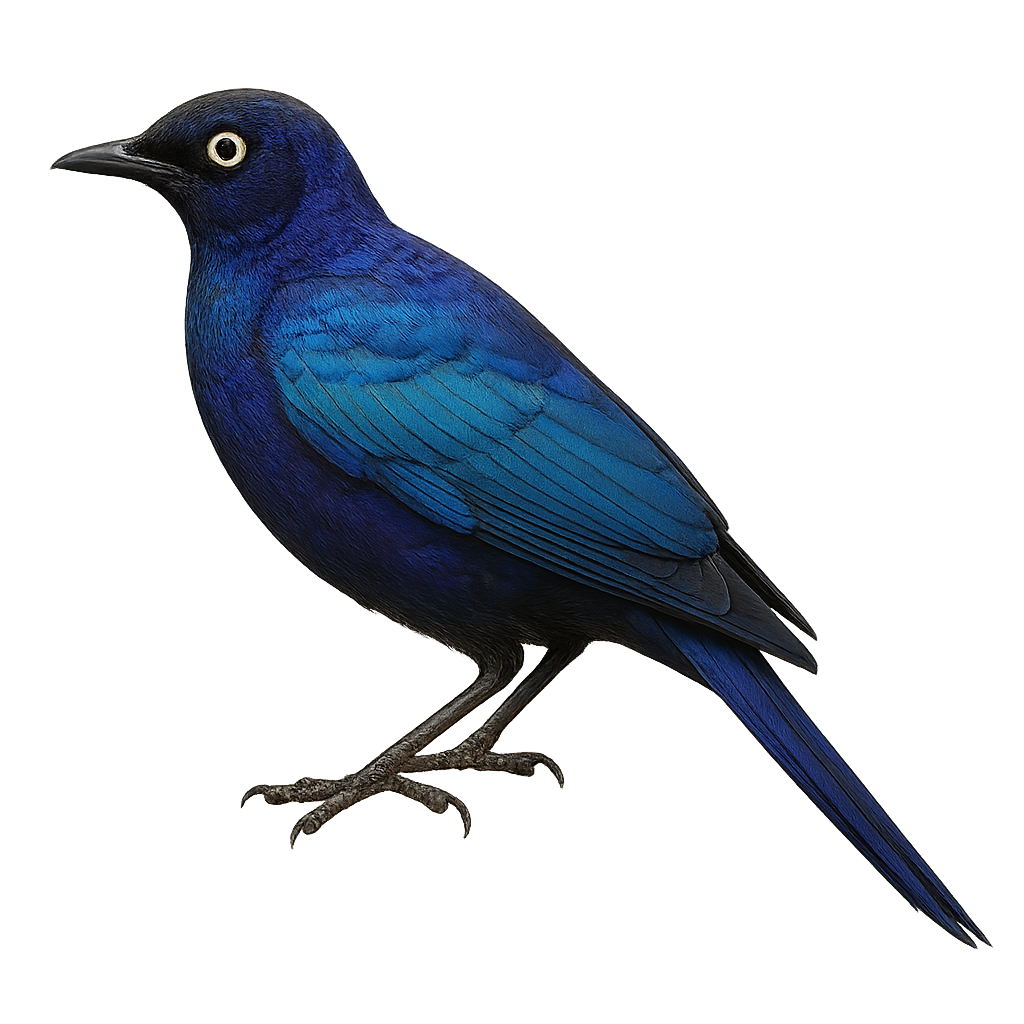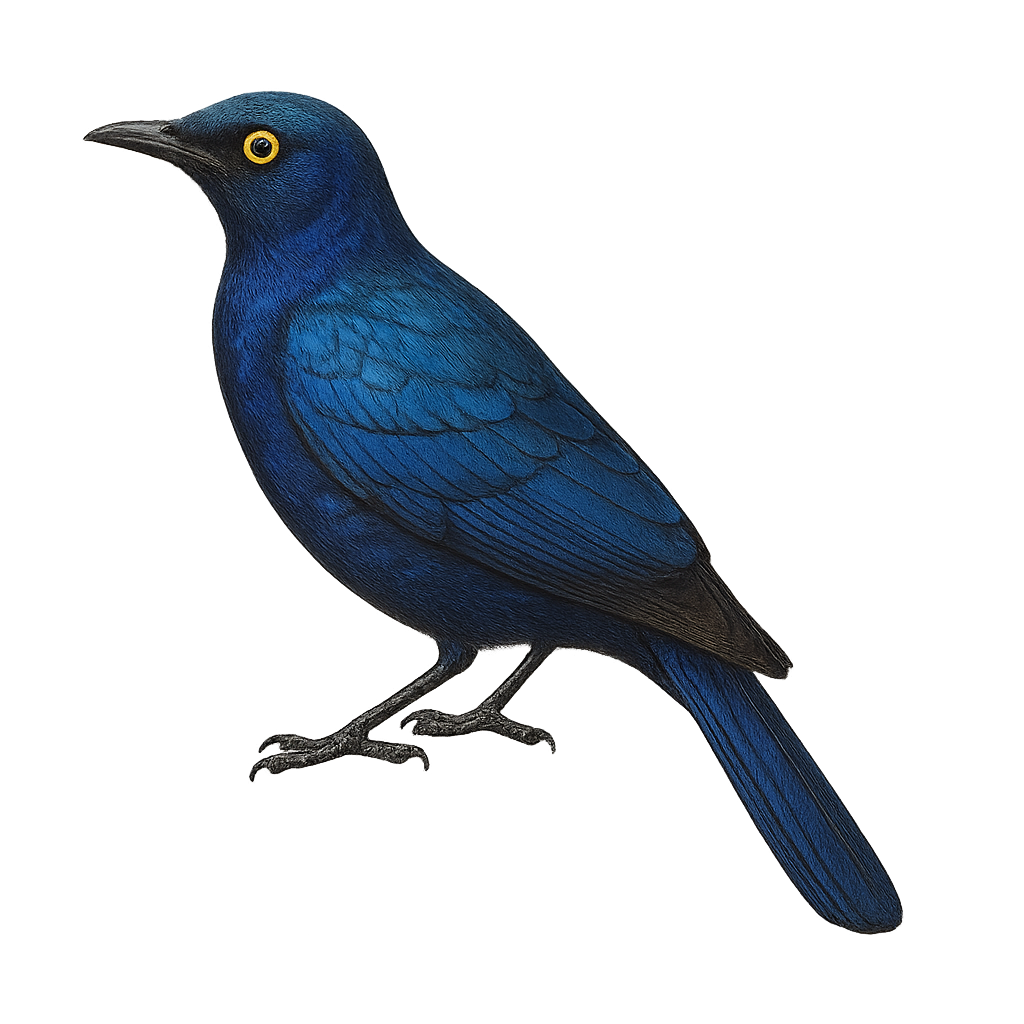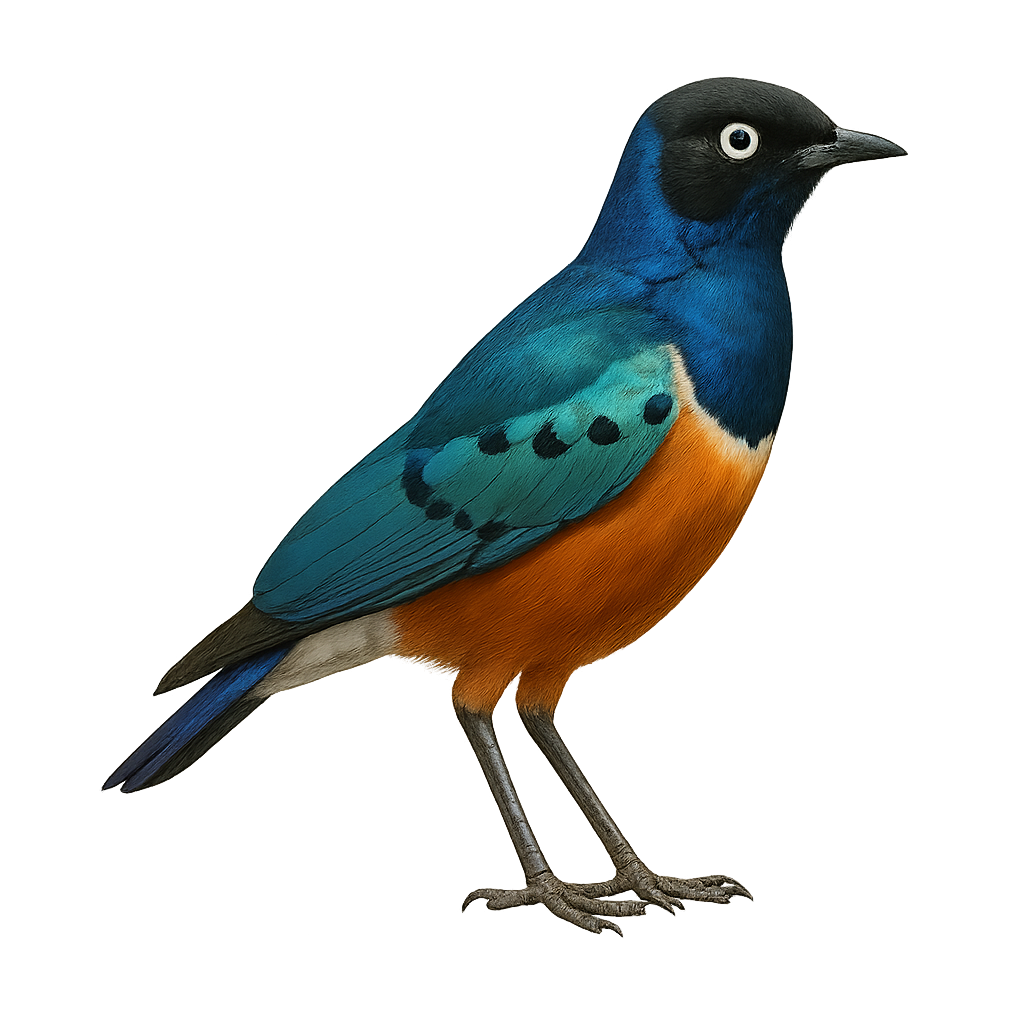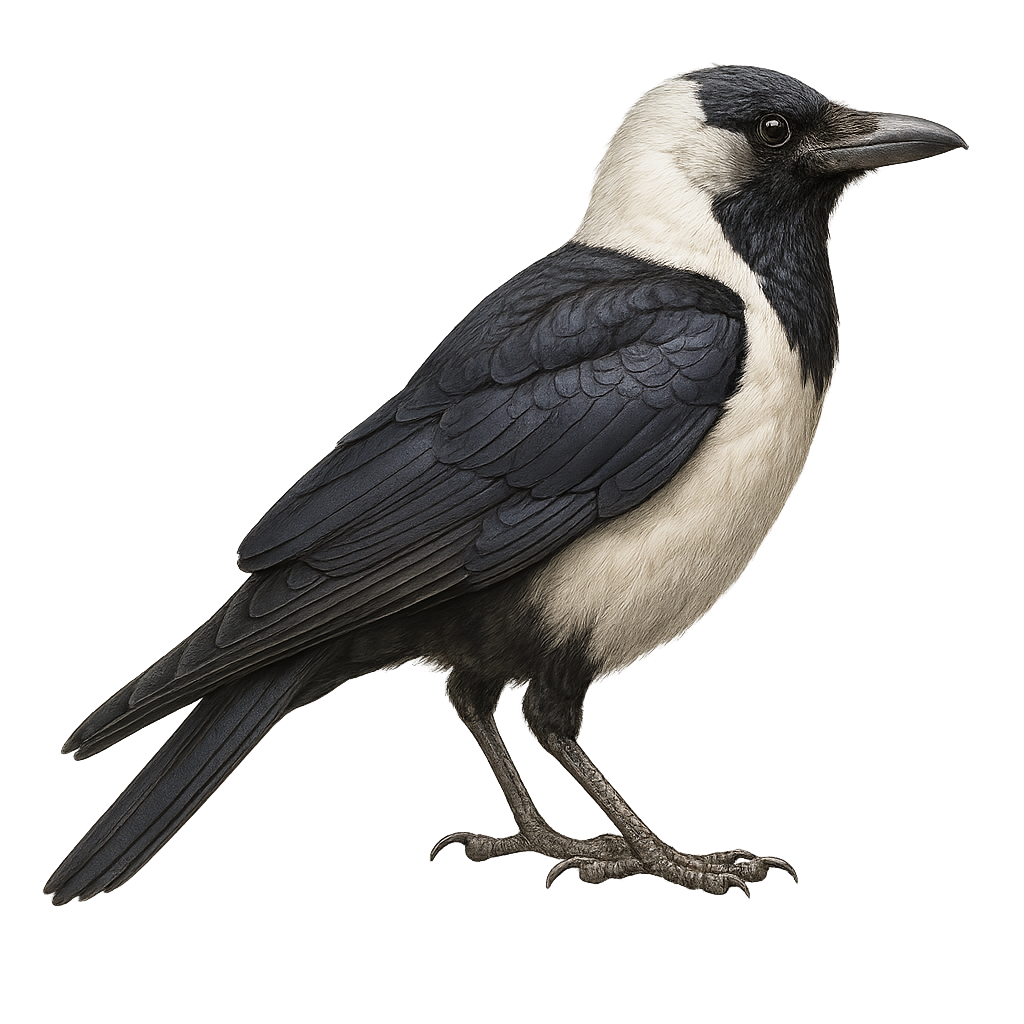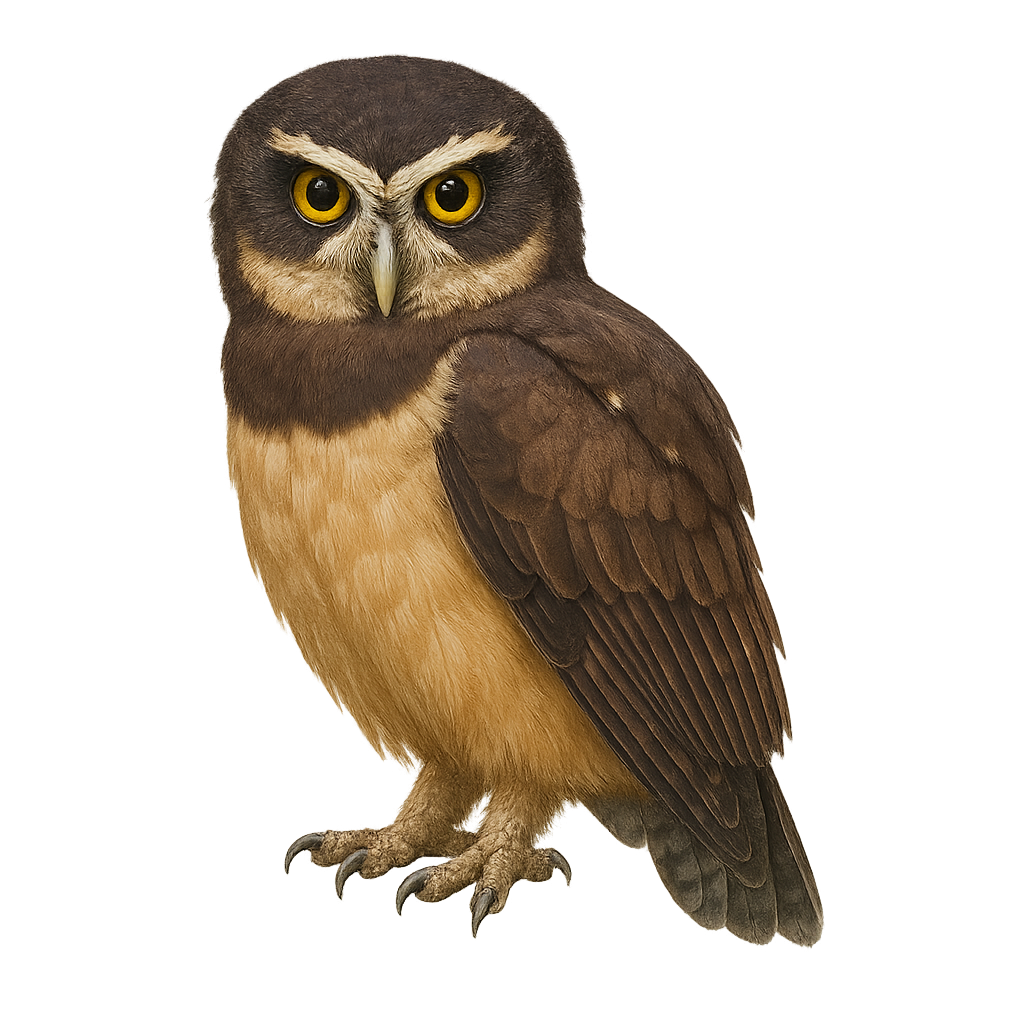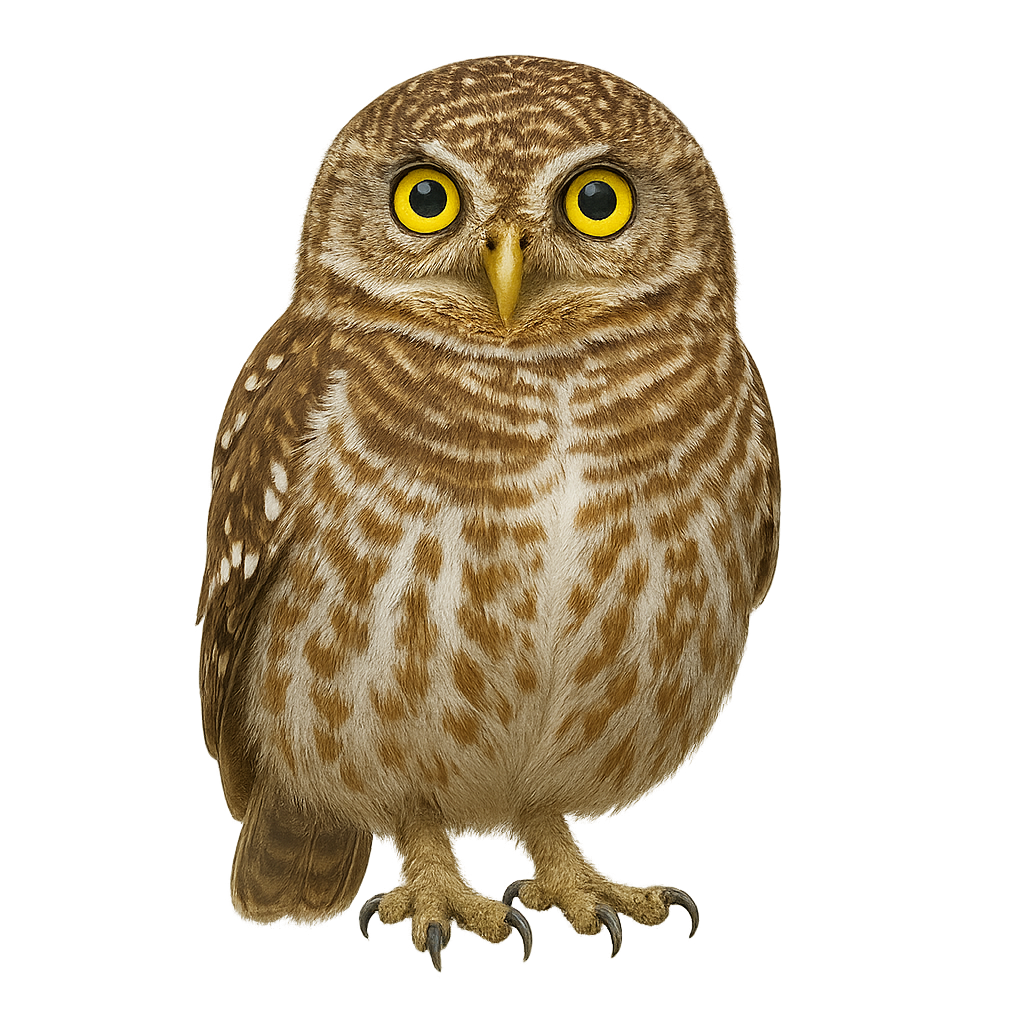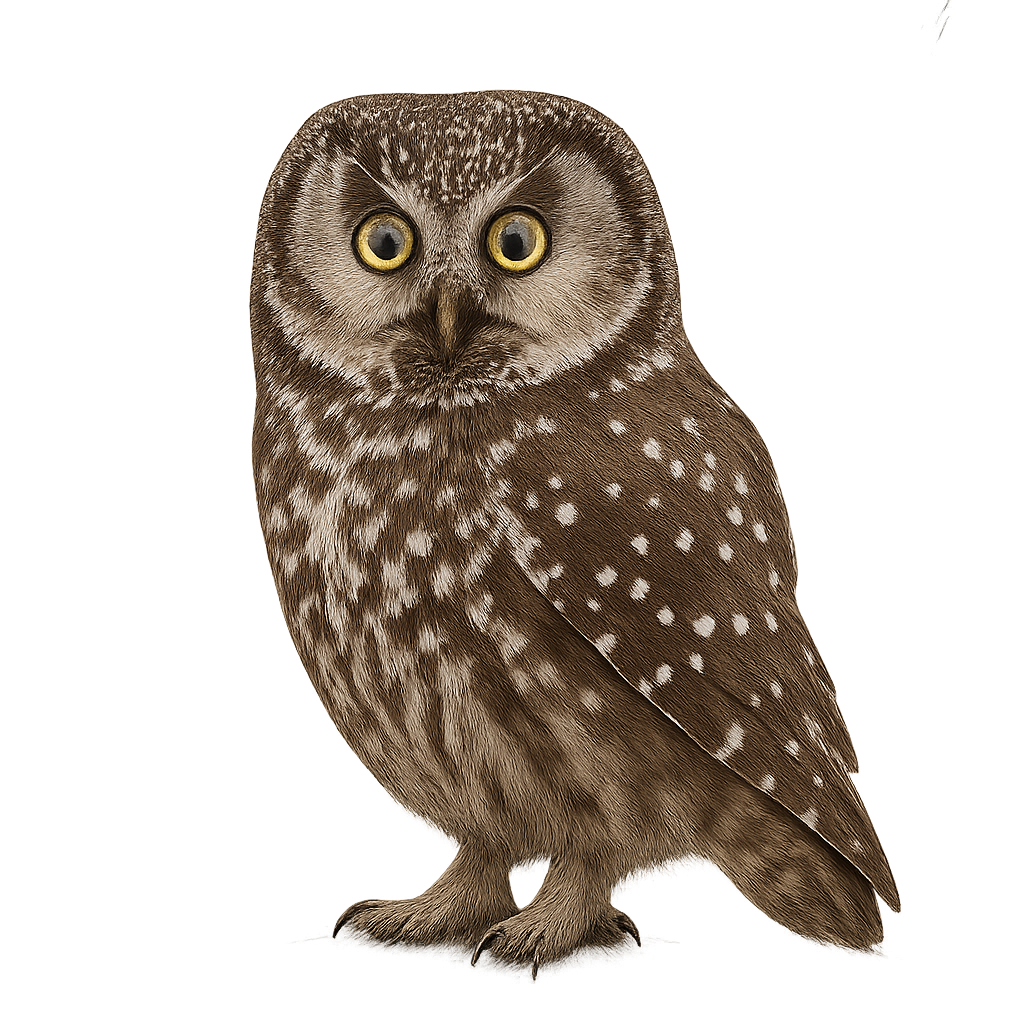The Mountain Goat is a robust mammal well adapted to life in the rugged mountains and rocky terrain of North America. This herbivore is easily recognizable by its white or cream-colored coat, which helps it blend into the snow and rocks. Its legs are specially adapted for climbing, with wide and rigid hooves that provide excellent traction on steep slopes.
The Mountain Goat feeds primarily on herbaceous plants, lichens, and moss, which it finds in rocky slopes and alpine meadows. While it is often perceived as a hardy species, it faces threats from habitat loss, poaching, and diseases transmitted by domestic animals. The population of Mountain Goats is closely monitored, and efforts are underway to protect this iconic species of the mountains.
The wild goat, or Capra aegagrus, is a robust and agile animal native to the mountains of Western Asia. It is the ancestor of the domestic goat and is distinguished by its impressive, curved horns, especially prominent in males. Its coat ranges from brown to gray, providing excellent camouflage in its rocky habitat. Wild goats live in groups, often consisting of females and young, while adult males are more solitary. They are well adapted to rugged terrains and can climb with remarkable agility. Their diet mainly consists of mountain vegetation, making them dependent on climatic conditions and the availability of natural resources.
The water deer is a small semi-aquatic deer, 45–55 cm at the shoulder, with tawny fur and an elongated muzzle. Native to China and Korea and introduced in parts of Europe, it inhabits marshes, rivers, and wetlands, feeding on aquatic plants, grasses, and riparian thickets. Solitary and crepuscular, it often moves under vegetative cover.
The Siberian Roe Deer, also known as the Asian Roe Deer, is a slightly larger species of cervid compared to the European Roe Deer. It is easily recognizable by its darker coat, ranging from brown to gray, with white markings around the mouth and belly. Males carry antlers that, while smaller than those of other large cervids, are still distinct and visible. This species primarily inhabits coniferous forests and wooded areas of Siberia, Central Asia, and Mongolia, where it hides during the day and becomes more active at dusk and night.
The Siberian Roe Deer is an herbivore, primarily feeding on vegetation, including young shoots, leaves, fruits, and bark. It is known for its great agility and speed, allowing it to move easily through the rugged terrain of its habitat. While its population remains stable in some regions, it is threatened by deforestation, hunting, and habitat fragmentation.
The Roe Deer is an elegant, small cervid, recognizable by its slender figure and long legs. It has a coat that changes with the seasons: reddish-brown in summer, becoming more gray-brown in winter. Males carry antlers, which grow back each year and are generally smaller than those of other cervids. The Roe Deer primarily lives in forests, wooded areas, and heathlands, where it hides during the day and becomes more active at dusk and night, particularly for feeding.
Its diet is varied, consisting of leaves, fruits, young shoots, and bark. While it is generally discreet and solitary, it can sometimes be seen in small groups, especially in winter. The Roe Deer is an agile and fast animal, capable of covering large distances in a short time when threatened. While its population remains relatively stable, it faces threats from hunting and habitat loss.
The black-tailed prairie dog is a small social ground squirrel about 30 cm long with sandy-brown fur and a black-tipped tail, living in dense burrow colonies on North American grasslands. It feeds on grasses, roots and seeds. During the breeding season, males actively defend territories with alarm calls and erect postures.
The bush dog, or Speothos venaticus, is a medium-sized canid native to South America. It is characterized by its dark brown fur, short legs, and stocky body. Adapted to forest life, it is often found near water, where it hunts in packs. This social predator is known for its ability to take down prey larger than itself, thanks to exceptional coordination within its group. Although elusive, it plays a crucial role in the ecosystem by regulating prey populations. Unfortunately, deforestation and hunting have reduced its numbers, making it vulnerable to extinction.
The raccoon dog, or Nyctereutes procyonoides, is a canid native to East Asia, known for its thick fur and distinctive facial mask resembling that of a raccoon. This omnivorous mammal adapts to various environments, from forests to wetlands. Primarily nocturnal and crepuscular, it feeds on small animals, fruits, and vegetation. Although often solitary, it can form monogamous pairs. Introduced to Europe for fur farming, it has established itself in some regions. Its adaptability and varied diet make it a resilient species, though its impact on local ecosystems is sometimes debated.
The Japanese Raccoon Dog, or Nyctereutes viverrinus, is a medium-sized canid known for its thick fur and resemblance to a raccoon. Native to Japan, it thrives in temperate climates and is primarily found in forests, grasslands, and wetlands. This omnivorous mammal feeds on fruits, insects, small animals, and occasionally human waste. It is notable for its ability to climb trees, a rare trait among canids. The Japanese Raccoon Dog is a social animal, often seen in small family groups. Although hunted for its fur, it is not considered endangered.
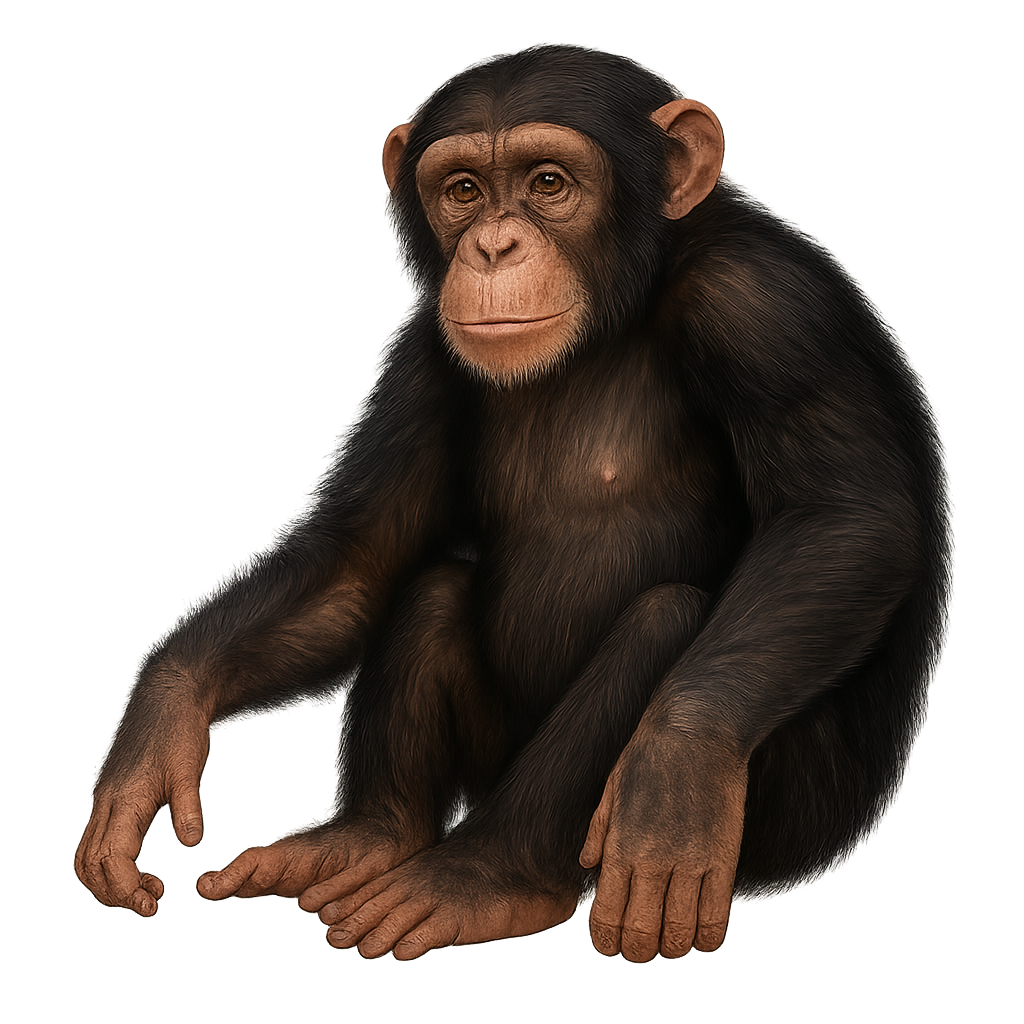
The Chimpanzee is one of humans' closest relatives, sharing about 98% of its DNA with humans. This large primate is easily recognizable by its expressive face, dark or brown skin, and sharp eyes. It has a powerful body, although it is smaller and less robust than other large primates like the gorilla. The Chimpanzee primarily inhabits tropical forests and savannas in West and Central Africa, where it forms complex social groups, called communities, which can include several dozen individuals.
An omnivore, the Chimpanzee feeds on a wide range of foods, including fruits, leaves, insects, and sometimes meat. It is also known for its use of tools, such as sticks to extract termites or stones to crack nuts. This primate has exceptional intelligence, capable of solving complex problems, communicating in sophisticated ways, and adopting cultural behaviors. However, it is threatened by deforestation, poaching, and habitat loss, leading to a decline in its wild populations. The chimpanzee is classified as an endangered species.
The Eastern Chimpanzee, or Pan troglodytes schweinfurthii, inhabits the tropical rainforests of Central and East Africa. Known for their remarkable intelligence, tool use, and complex social structures, these primates live in communities of up to 150 individuals led by an alpha male. Their omnivorous diet includes fruits, leaves, insects, and occasionally meat. Eastern chimpanzees communicate through a variety of vocalizations, gestures, and facial expressions. Unfortunately, they are threatened by deforestation, poaching, and diseases, leading to a significant decline in their population over recent decades.
The Long-tailed chinchilla is a small rodent native to the mountains of South America, particularly the Andes. It is known for its extremely soft and dense fur, which helps protect it from the cold in its natural high-altitude habitat. Although its fur is an asset for survival, it is also the primary reason for the animal's hunting, although it is now protected. The Long-tailed chinchilla is a nocturnal and climbing animal, feeding primarily on plants, seeds, and fruits. It is active at night and spends the day hidden in crevices or burrows.
The Hispaniolan Sparrow is a small passerine bird belonging to the Thraupidae family. It is primarily found in the mountainous regions and high-altitude forests of Hispaniola, which includes Haiti and the Dominican Republic. This bird is characterized by its brown-gray plumage with lighter shades on the belly and distinctive markings on the head. It is often seen in small groups, feeding on seeds and insects. The Hispaniolan Sparrow is a resilient bird, capable of adapting to various habitats, although it prefers wooded areas. Its population is stable, but it remains vulnerable to environmental changes and deforestation.
The Bolivian Brushfinch, scientifically known as Poospiza boliviana, is a medium-sized bird belonging to the Thraupidae family. It is primarily endemic to the mountainous regions of Bolivia, where it inhabits humid forests and shrublands. Its plumage is a mix of gray, brown, and white, with distinctive markings on the head and wings. This bird is often seen in small groups, feeding mainly on insects and seeds. Its ability to adapt to various habitats makes it a resilient species, although deforestation poses a potential threat to its populations. The Bolivian Brushfinch is a fascinating bird to observe, especially due to its melodious song and interesting social behaviors.
The Bolivian Warbling Finch is a bird endemic to the Bolivian Andes, known for its distinctive plumage and melodious song. This medium-sized passerine features gray and brown hues, with lighter shades on its belly. It primarily inhabits shrublands and cloud forests, where it feeds on seeds and insects. Though discreet, it is often detected by its characteristic song. Its population is currently stable, but it remains vulnerable to environmental changes and deforestation. Conservation efforts are crucial to preserving its natural habitat and ensuring its long-term survival.
The Baer's Sparrow, or Poospiza baeri, is a small passerine bird belonging to the Thraupidae family. It is primarily found in the mountainous regions of South America, particularly in Argentina. This sparrow is characterized by its subtle plumage, often in shades of brown and gray, allowing it to blend into its natural habitat. It mainly inhabits high-altitude shrublands and open grasslands. Its song is melodious yet discreet, often heard before being seen. The Baer's Sparrow is a relatively suspicious bird, preferring to keep its distance from humans.
The Black-and-chestnut Warbling Finch is a small passerine bird belonging to the Thraupidae family. It is mainly found in the mountainous regions of South America, particularly in Bolivia and Argentina. This bird is distinguished by its gray and brown plumage, with a characteristic white stripe above the eye, giving it an expressive look. It inhabits humid forests and shrublands, where it primarily feeds on insects and seeds. The Black-and-chestnut Warbling Finch is a discreet bird, often seen in small groups or pairs. Its ability to blend into its environment sometimes makes it difficult to spot, but its melodious song often reveals its presence.
The Black-backed Sierra Finch, Poospiza nigrorufa, is a small passerine bird belonging to the Thraupidae family. It is primarily found in the mountainous regions of South America, particularly in Argentina, Bolivia, and Peru. This bird is characterized by its black plumage on the back and top of the head, contrasting with a rufous belly and chest. It inhabits shrublands and high-altitude grasslands, often near watercourses. The Black-backed Sierra Finch is a discreet bird, often seen in small groups or pairs. It feeds mainly on seeds and insects, which it finds by foraging on the ground or exploring bushes.
The Alpine Chough, or Pyrrhocorax graculus, is a mountain bird from the Corvidae family. It is recognized by its glossy black plumage, bright yellow bill, and red legs. This bird is often seen in the Alps and the Pyrenees, where it moves in noisy flocks. Exceptionally agile in flight, it can skillfully maneuver in updrafts. Opportunistic, it feeds mainly on insects, fruits, and food scraps left by hikers. The chough is a sociable bird, often not very shy, and easily approaches humans. It nests in rock crevices and cliffs, usually laying three to five eggs.
The White-billed Starling is a medium-sized bird, easily recognizable by its glossy black plumage and distinctive white bill. It is primarily found in the mountainous regions of Ethiopia and Eritrea. This bird is often seen in small groups, feeding on fruits, insects, and sometimes small vertebrates. Its song is melodious, consisting of whistles and trills. It plays a crucial role in seed dispersal, aiding forest regeneration. Although relatively common in its natural habitat, it is threatened by deforestation and habitat loss.
The Cape Starling, or Lamprotornis nitens, is a bird with dazzling plumage, mainly metallic blue-green, with iridescent reflections that catch the sunlight. Its yellow eyes contrast with its plumage, adding a touch of mystery to its appearance. This bird is often seen in small groups, feeding on fruits, insects, and nectar. It is known for its melodious and varied song, which it uses to communicate with its peers. It is mainly found in savannas, open forests, and agricultural areas of sub-Saharan Africa. Although generally tolerant of humans, it can be suspicious if threatened.
The Rüppell's Starling is a striking bird known for its iridescent plumage and deep purple shoulders. It primarily inhabits the savannas and wooded areas of East Africa, feeding on fruits, insects, and occasionally small vertebrates. This sociable bird is often seen in groups, which helps protect it from predators. Its song is varied, consisting of whistles and melodious chirps. The breeding season varies by region but is often linked to the availability of food resources. Nests are typically built in tree cavities, where the female lays several eggs.
The Splendid Starling, or Lamprotornis splendidus, is a bird renowned for its iridescent plumage with metallic hues of blue, green, and violet. This medium-sized passerine, measuring about 22 to 24 cm in length, is commonly found in sub-Saharan Africa, particularly in savannas and open forests. Its black beak and yellow eyes stand out against its vibrant feathers. Sociable by nature, it lives in groups and primarily feeds on insects, fruits, and seeds. Its song is melodious, consisting of whistles and trills. The Splendid Starling is a resilient bird, capable of adapting to various environments, allowing it to thrive in diverse habitats.
The Superb Starling is a striking bird with a metallic blue plumage, bright orange belly, and white chest. It measures about 18 to 19 cm in length. This bird is commonly found in East Africa, particularly in Kenya and Tanzania, where it inhabits savannas, woodlands, and urban gardens. Known for its social behavior and melodious songs, Superb Starlings live in groups and are often seen foraging on the ground for insects, fruits, and seeds. Their nests are usually built in bushes or hollow trees.
The Daurian Jackdaw, Coloeus dauuricus, is a medium-sized bird belonging to the Corvidae family. It is characterized by its black and gray plumage, with a black cap and white cheeks. This bird is mainly found in East Asia, particularly in China, Mongolia, and Russia. It inhabits open areas, sparse forests, and agricultural lands. The Daurian Jackdaw is a sociable bird, often seen in groups. It primarily feeds on insects, seeds, and small fruits. Its behavior is generally tolerant towards humans, making it relatively easy to observe. The breeding season extends from spring to summer, with nests built in tree cavities or buildings.
The western jackdaw is a 34–39 cm corvid with dark slate-grey plumage and a black cap, notable for its pale, piercing eyes. Found throughout Europe and western Asia, it inhabits urban areas, coastal cliffs and open countryside, feeding on insects, seeds, small invertebrates and eggs. An opportunistic omnivore, it nests in natural or built cavities and may form large colonies.
The Spectacled Owl, or Pulsatrix perspicillata, is a medium-sized nocturnal raptor known for its distinctive white facial markings that resemble spectacles. It has dark brown plumage with a white chest and cream-colored belly. Found primarily in the dense tropical forests of Central and South America, this species is recognized by its deep, resonant "hoo-hoo" call. It primarily feeds on small mammals, birds, and insects. The Spectacled Owl is a solitary and territorial bird, often seen perched on low branches while hunting for prey.
The Asian Barred Owlet, or Glaucidium cuculoides, is a small nocturnal bird of prey belonging to the Strigidae family. It is mainly found in South and Southeast Asia, particularly in the forests of the Himalayas, from northern India to China and Indonesia. It is characterized by its brown plumage with white bars on the chest and wings, and its piercing yellow eyes. Measuring about 22 to 25 cm in length, it is known for its distinctive call that resembles that of a cuckoo. It primarily feeds on insects, small mammals, and birds. The Asian Barred Owlet is a discreet bird, often difficult to spot due to its plumage that blends perfectly with its forest environment.
The Ural owl (Strix uralensis) is a large nocturnal raptor (50–60 cm in body length with a wingspan of 110–125 cm), featuring soft tawny-grey plumage and a pale facial disc outlined in dark concentric rings. Distributed across mature coniferous and mixed forests of Eastern Europe and Northern Asia, it primarily preys on small mammals such as rodents and shrews, supplemented by birds and insects. It nests in old tree cavities or occasionally occupies abandoned corvid nests. Territorial year-round, it utters deep resonant hoots during the breeding season to attract mates and defend its territory. Secretive and vigilant, it often perches motionless high in the canopy to scan for prey.
Tengmalm's Owl is a small nocturnal raptor, easily recognized by its small size and large, piercing yellow eyes. It has gray-brown plumage with characteristic white markings on the head, wings, and back. Its ears are very inconspicuous, and its face is surrounded by a pale facial disc. This owl primarily inhabits coniferous forests, dense wooded areas, and mountains, where it hides in tree cavities or abandoned nests of other birds.
Tengmalm's Owl mainly hunts small mammals, birds, and insects, which it catches at night by flying silently through the forests. It is particularly active during the breeding season, when it emits characteristic calls to attract its mate. Although it is relatively discreet and often difficult to observe, Tengmalm's Owl is protected in some areas, though its population is threatened by deforestation and habitat loss.



